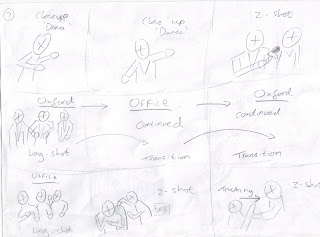Through the editing process we have been using the computer program ‘Windows Movie maker’. Windows Movie Maker is a basic video and audio editing program that allows us to upload our footage and cut and move it. It also offers basic effects such as transitions, fade-ins/outs and scene-splits.
Once we had our footage filmed on our camera I plugged it into the computer and uploaded them to Windows Movie Maker. The audio track was loaded to the bar underneath the film footage so that we could cut and move our film to fit in with the audio. Between scenes we added transitions and particularly made the flow smoother by introducing fade-ins.
On the positive side, Windows Movie Maker has a friendly interface and is easy to use. Negatively it is easy because it is basic and doesn’t include features we wanted to use such as ‘Green Screen’. The software is very slow and frequently crashes which can be very frustrating. The crashing usually occurs when I try to import an mpeg-encoded video file despite Windows listing this type of file as compatible. We have found that we have had to convert these files to either AVI or WMV files to make it run smoother.
Despite these flaws we have been able to get positive results so far- and it’s the only program we have. I'm finding the editing process is going well as we match our footage to our audio and try to match the lip syncing.
These are photos of me editing our work on Windows Movie maker. Here I am ordering the shots we took and dragging and dropping them into the time line below. I can create fade-in transactions by slightly over lapping the shots; I think this type of transition will work well with our video.





































